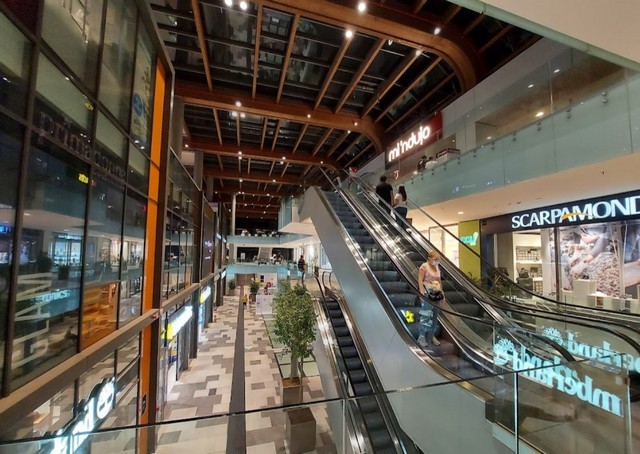What Is The Capital of Italy: History, Facts, Best Places to See
 |
| What Is The Capital of Italy: History, Facts, Best Places to See. Photo: knowinsiders. |
What is the Capital of Italy?
How much do you know about the capital of Italy, Rome?
With the unification of Italy, Rome was chosen capital of the country in 1870. Nowadays, it is one of the most visited cities in the world.
The history of Rome begins with the famous legend of its founding in 753 BC by the twin boys, Romulus and Remus, raised by a she-wolf. There is no doubt that Rome has since fulfilled its destiny to become a great world city, and the centre of one of history’s greatest empires.
Let’s start with the basics, including history, best places to go and frequently asked questions and facts about the capital of Italy.
*****
History of Rome
According to rome.net, the exact origins of the city of Rome are still somewhat of a mystery. There are several theories all based on the writings of ancient authors and the archaeological discoveries.
For this reason, the founding of Rome is based mainly on legend and myth, instead of solid facts and figures. The existence of a Roman Kingdom was even questioned during practically two centuries by expert historians.
During the nineteenth and twentieth century, they dismissed the idea of the early kings of Rome (Romulus, Numa Pompilius, Tullus Hostilius) as well as the date of the founding of what would later become the capital of Italy, in 753 BC. This part of history was merely considered a legend and not taken seriously.
It was only during the late twentieth century when, thanks to the findings of numerous archeological digs and other sciences, that the myths surrounding the establishment of the city and its first rulers were reconsidered.
It is believed that the first inhabitants of Rome came from various parts of the region, and had neither the economic nor the cultural development of their northern neighbors, the Estrucans, nor the southern civilization called the Sabines and Latins.
In the Palatine Hill archeologists found the remains of a primitive settlement from the eighth century BC, with burials on the outskirts of the village. It is thought that as the population grew, the inhabitants settled on the slopes of the nearby hills, and during the next century they established themselves in the valley.
| Rome eventually collapsed under the weight of its own bloated empire, losing its provinces one by one: Britain around 410; Spain and northern Africa by 430. Attila and his brutal Huns invaded Gaul and Italy around 450, further shaking the foundations of the empire. In September 476, a Germanic prince named Odovacar won control of the Roman army in Italy. After deposing the last western emperor, Romulus Augustus, Odovacar’s troops proclaimed him king of Italy, bringing an ignoble end to the long, tumultuous history of ancient Rome. The fall of the Roman Empire was complete. |
Roman Architecture
As history.com reported, Roman architecture and engineering innovations have had a lasting impact on the modern world. Roman aqueducts, first developed in 312 B.C., enabled the rise of cities by transporting water to urban areas, improving public health and sanitation. Some Roman aqueducts transported water up to 60 miles from its source and the Fountain of Trevi in Rome still relies on an updated version of an original Roman aqueduct.
Roman cement and concrete are part of the reason ancient buildings like the Colosseum and Roman Forum are still standing strong today. Roman arches, or segmented arches, improved upon earlier arches to build strong bridges and buildings, evenly distributing weight throughout the structure.
Roman roads, the most advanced roads in the ancient world, enabled the Roman Empire—which was over 1.7 million square miles at the pinnacle of its power—to stay connected. They included such modern-seeming innovations as mile markers and drainage. Over 50,000 miles of road were built by 200 B.C. and several are still in use today.
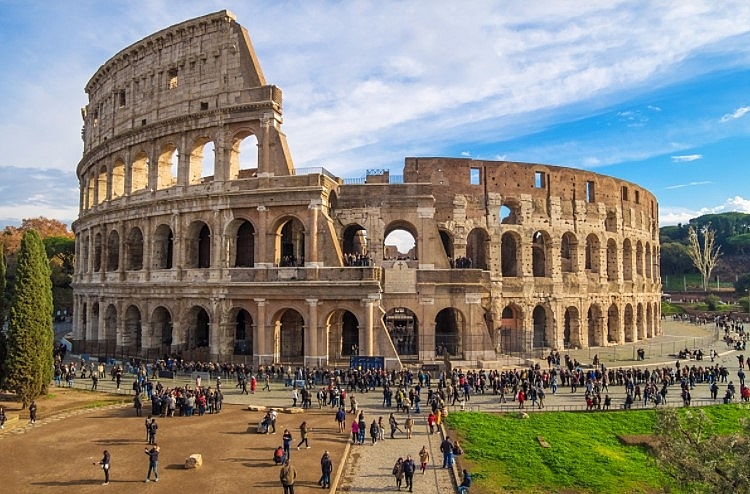 |
| Photo: rome.com |
Best Places to See in Rome
The city where hope springs eternal. It is a city that is proud of its ancient glorious heritage, a city that once expanded its empire throughout Europe, Africa and Asia. Rome is a city drenched in history and Christianity. First-time visitors may be easily overwhelmed by all this magnificent city has to offer.
A trip to the capital wouldn't be complete without seeing the following attractions:
Colosseum
According to touropia, the Colosseum is another of Rome’s major tourist attractions. Its construction was started by emperor Vespasian of the Flavian dynasty in 72 AD and was finished by his son Titus in 80 AD.
The elliptical amphitheater could hold up to 50,000 people who turned out to watch gladiators do battle, people be publicly executed and enjoy other forms of entertainment. This stone and concrete structure, built in the first century, was the largest amphitheater in the Roman Empire. It is considered one of the Romans’ greatest architectural and engineering feats.
St. Peter's Basilica
St. Peter’s Basilica is one of the holiest temples for Christendom and one of the largest churches in the world. Besides, it is where the Pope presides many liturgies all year round, as rome.net reported.
The construction of the new basilica began in 1506, when the old basilica had been torn down, and was finished in 1626. It was consecrated on 18 November, 1626. Several renowned architects designed the temple, highlighting the works of Bramante, Michelangelo and Carlo Maderno.
The basilica was called St Peter’s after one of Jesus’s twelve disciples known as Saint Peter, who became one of the founders of the Catholic Church and was executed in Rome and buried where the Basilica now stands.
| St Peter’s Basilica can accomodate 20,000 people. It measures 190 m (624 ft) long and the central nave is 46 m (150 ft) tall. The dome stands 136 m (447ft) tall. Inside, visitors will find extremely impressive pieces of art, including St. Peter’s Baldachin, a large bronze baldachin designed by Bernini, The Pietà, a sculpture by Michelangelo and the statue of St Peter on his throne. St Peter has his right foot worn down due to the touches of the devoted. |
Vatican City
According to planetware.com, the Vatican is the smallest independent state in the world, with an area of less than half a square kilometer, most of it enclosed by the Vatican walls. Inside are the Vatican palace and gardens, St. Peter's Basilica, and St. Peter's Square, an area ruled by the Pope, supreme head of the Roman Catholic Church. This compact space offers a lot of things to see, between its museums and the great basilica itself.
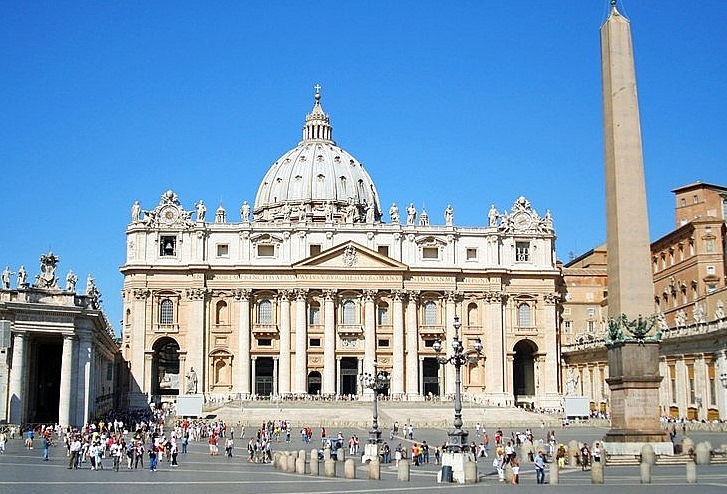 |
| Vatican City. Photo: planetware.com. |
Trevi Fountain
Completed in 1762 to a design by Nicola Salvi, this world famous Baroque fountain features a mythological sculptural composition of Neptune, god of the sea, flanked by two Tritons.
The location of the Trevi fountain marks the terminus of the ancient Aqua Virgo aqueduct and is so named on account of its position at the junction of three roads (tre vie).
The fountain was the setting for an iconic scene in Fellini’s film Dolce Vita starring Anita Ekberg and Marcello Mastroianni. Since than, it has become one of the most popular tourist attractions in Rome. The legend says that one who throws a coin in the fountain shall one day return to Rome.
The Pantheon
The Pantheon of Agrippa, also known as the Roman Pantheon, is one of the architectural masterpieces of the Italian capital. It is the best preserved building from ancient Rome.
The construction of the current Pantheon was carried out during the reign of Hadrian, in the year 126 A.D. The name of Agrippa comes from the place in which the current building is built, which was previously occupied by the Pantheon of Agrippa, built in the year 27 B.C and that was destroyed in a fire in the year 80 A.D.
At the beginning of the 7th century the building was donated to the Pope Boniface IV, who transformed it into a church, in which function it currently finds itself in a perfect state of preservation.
Piazza Navona
One of the most famous of Rome’s many squares, Piazza Navona was established towards the end of the 15th century, and preserves the shape of the Stadium of Domitian that once stood here.
Built by Emperor Domitian in 86 AD, the stadium, which had a larger arena than the Colosseum was mainly used for festivals and sporting events. The buildings surrounding the square stand where the spectators once sat.
Today, the square features no less than three magnificent fountains and is an immensely popular place to sip a cappuccino, shop, and watch street performers.
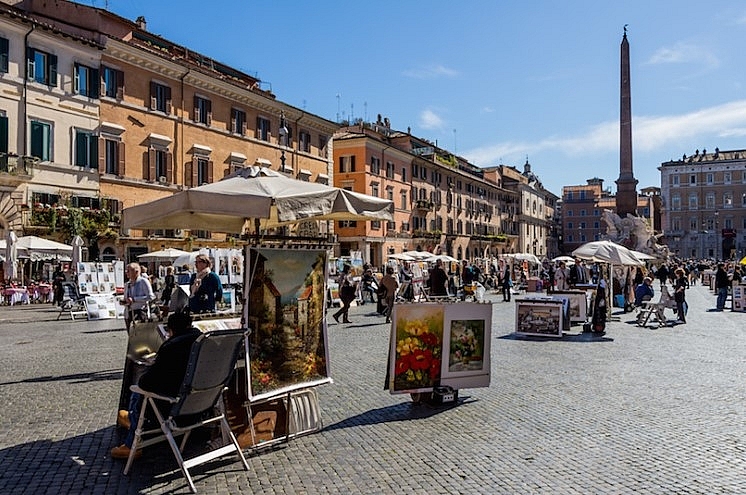 |
| Photo: touropia.com |
Spanish Steps
According to thrillophilia.com, located on the pretty Piazza di Spagna (literally ‘Spanish Square’), the Spanish Steps is a much-loved spot in Rome for snap-happy travelers. The 135-steps stairway fans out in an irregular butterfly-like design. If you are an art connoisseur in Rome, the typical Roman Baroque-style architecture of the stairs is sure to capture your interests. Tourists also visit here to clamber up to the top of the stairwell from where you can find a brilliant, sweeping view of the Piazza down below.
At the peak of springtime in April, you will find the stairs bedecked with pink and purple azaleas blooming in all glory. The springtime also coincides with the myth of the birth of Rome- the Eternal City bringing vibrant festivities and large gatherings at the Spanish Steps. The iconic stairway of Rome happens to draw a lot of artsy people--painters, literateurs, models, and photographers, to its magnificent steps.
Palatine Hill
The Palatine is something of a green heaven. Once home to aristocrats and emperors, this hill is one of the tallest among “the seven hills”. Overshadowed by the fame of Colosseum, Palatine hill provides the fresh perspective of Rome and its history. This place has been a commercial, religious and political centre for many years. Known as the “first nucleus of the Roman Empire”, this place has hundreds of ruins and secret pathways making it one of the best places to visit in Rome.
Location: Middle of “the seven hills”
Timings: Always open
Entry fee: INR 1200( €14 ) for the sites on hill
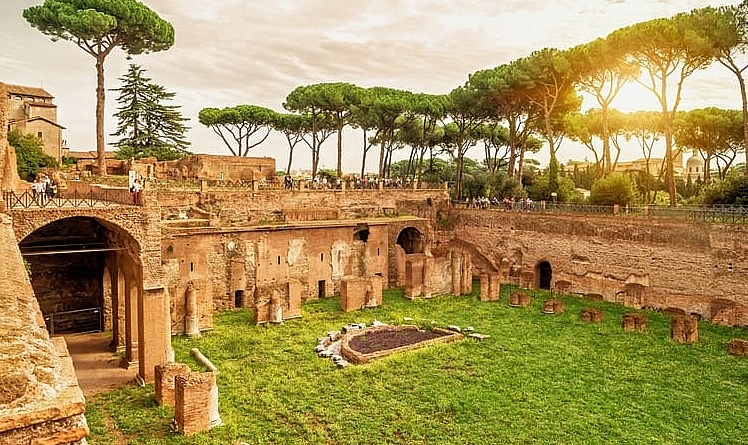 |
| Photo: thrillophilia.com |
Roman Forum
According to planetware.com, walking through the forum, now in the middle of a throbbing modern city, is like stepping back two millennia into the heart of ancient Rome. Although what survives of this center of Roman life and government shows only a small fraction of its original splendor, the standing and fallen columns, its triumphal arches, and remains of its walls still impress, especially when you consider that for centuries, the history of the Forum was the history of the Roman Empire and of the Western world.
Roman political and religious life was centered here, along with the courts, markets, and meeting places. After the seventh century, the buildings fell into ruin, and churches and fortresses were built amid the ancient remains. Its stones were quarried for other buildings and it was not until the 18th and 19th centuries that systematic excavations brought the ancient buildings to light from under a 10-meter layer of earth and rubble.
Castel Sant'Angelo National Museum
Begun in AD 135 as a mausoleum for the Emperor Hadrian and his family, Castel Sant'Angelo is a massive drum-shaped structure overlooking the Tiber near the Vatican. Over the millennia of its existence, Castel Sant'Angelo has been used as a papal residence and a fortress, and more recently as a National Museum.
In AD 271, Emperor Aurelian took advantage of its position guarding the northern approaches to the city and incorporated it into his new system of walls surrounding the city. As a bastion it protected the city from barbarian attacks, and by the Middle Ages had become a substantial fortress. In times of peril, popes fled here across a secret elevated corridor, the Passetto di Borgo, and stored their most precious riches in the castle's treasury.
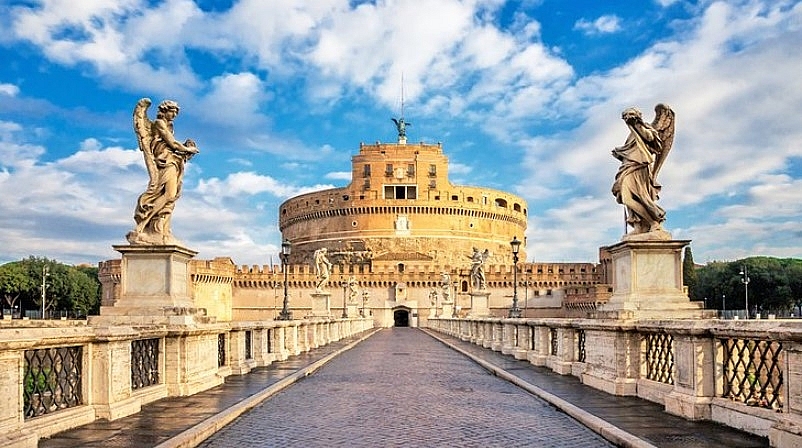 |
| Photo: planetware.com. |
Visitors reach the castle across a pedestrian bridge lined with statues of angels (by Bernini), and ascend to its five floors on a spiral ramp. At its various levels are prison cells, a large collection of weapons, and splendidly decorated papal apartments covered in Renaissance frescoes. At the top is a terrace with stunning views of the city.
Address: Lungotevere Castello 50, Rome
Interesting Facts about Rome
Here are some interesting facts that we summed up from eatingeurope.com, theplanetd.com and strictlyrome.com:
The Colosseum Had Its Gory Days
According to theplanetd.com, we all know the Colosseum was the scene of gladiator fights in times gone by, but did you know that over 500,000 people and a million animals died in the name of these sports? Fortunately, these blood baths came to an end in 435 AD.
Emperor Vespasian built the Colosseum between 72 and 80 AD with the help of thousands of slaves. In its heyday, it hosted chariot races and even naval battles. It had 80 entrances, 36 trap doors, numerous underground passages, and a retractable velarium for shade
The colosseum seated 50,000 spectators, hosting games for up to 100 days at a time and the reigning emperor sometimes provided free food for all the spectators. Nowadays, the Colosseum is one of the top attractions in Rome, drawing over 6 million visitors a year. Although only a third of this building remains, it’s still regarded as the largest amphitheater in the world.
Sometimes the Romans would flood the whole Colosseum or Circus Maximus for a boat battle
Big boats topped with warriors fought it out in the water and were complete down to the live props, like alligators.
TRAVEL TIP: Go see the Colosseum and the Circus Maximus and try to imagine the whole thing filled with water.
It Took 150 Years To Build St Peter’s Basilica
You’ll find this magnificent building in the State of the Vatican City, a country within the city of Rome. St Peter’s Basilica occupies St Peter the Apostle’s original burial site and deserves a place on every Rome itinerary. Julius II laid the first stone of the Basilica in 1506, and Bernini completed the elliptical piazza leading up to the building in 1667.
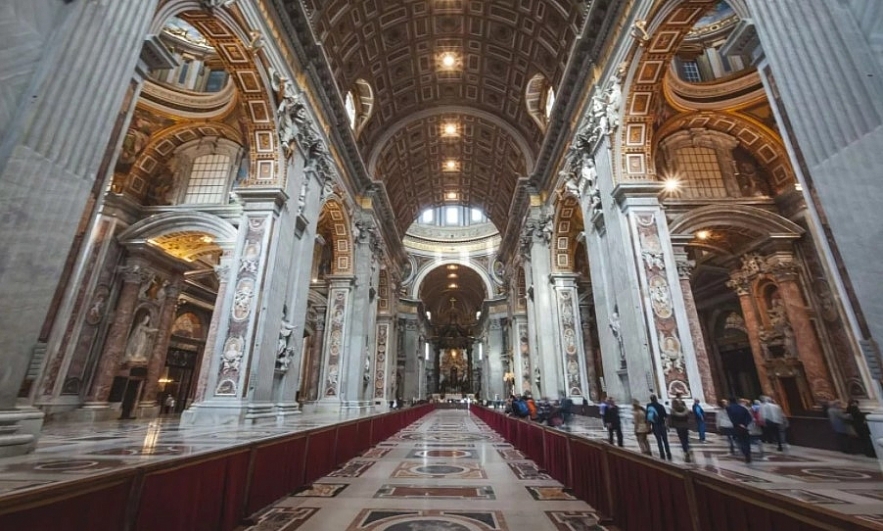 |
| Photo: theplanetd.com. |
Rome is built on 7 hills
Among the most notorious facts about Rome is that the city was built on 7 hills: the Palatine Hill, the Aventine Hill, the Capitoline Hill, the Caelian Hill, the Esquiline Hill, the Quirinal Hill, and the Viminal Hill.
All Roads Did Lead To Rome
The Romans built a road network of over 53,000 miles as early as the fourth century. This network of highways played a vital role in the history of Rome, helping them outpace and outmaneuver their enemies as they traveled across Europe conquering everything in sight.
Every time the Romans added another town to their empire, they linked it to Rome, establishing a solid supply network between the conqueror and the conquered.
The Romans maintained and protected these roads well, ensuring them speedy, secure access to anywhere in their Empire. You can visit one of the most famous Roman roads, the Appian Way, during your trip to Rome.
Ancient Rome is underground
Have you ever wondered why all the ancient stuff is so much lower than street level? That’s because after so many hundreds of years, the city has piled up, building on top of building.
You Could Get Take-Out In Ancient Rome
Back in the glory days of the Roman Empire, the rich gorged themselves on magnificent feasts, throwing up in between courses so they could cram more flamingo tongues into their bellies. Yet, most of the people living in Rome’s apartments had no cooking facilities. So, they bought hot meals from various snack bars (thermopolia) and wine bars (popina) dotted around the city.
You’ll find an excellent example of a thermopolium in Pompeii, about 2 hours drive from Rome, but they existed throughout the Roman Empire. If you’d like to sample a taste of ancient Rome, you can always opt for a traditional Pizza Romana.
This Rome version of the pizza features a crisp base, square design, and toppings like mushroom, olives, ham, tomato, artichokes, and even egg.
Cats Rule The Roost In Rome
One of the most interesting facts about Rome is the extraordinary importance that cats have in the city. According to a 1991 biocultural heritage law, nobody can relocate or chase cats away from any natural urban habitat as long as they’re living in a group of five or more individuals.
If you love to see cats living their best life, you can head to the Largo di Torre Argentina. Here, you’ll find over 250 feral cats living amongst the ruins. The cats moved in shortly after archaeologists began excavating the site in 1929, and they’ve been there ever since.
The Largo di Torre Argentina is one of many squares in Rome, but it’s significant in that experts believe it to be the site of Julius Caesar’s assassination. It’s also home to four of the city’s most ancient temples.
 |
| Photo: theplanetd.com. |
Romans used to wash clothes in urine!
Because urine contains ammonia, a powerful bleaching agent, ancient Romans used to wash their clothes in pee! At many street corners there were public urinals that men could use and their contents were collected every day and brought to the laundries.
| Frequently Asked Questions about Rome What language is spoken in Italy? Italian is the most spoken language and is Italy's national language. Many locals in tourist areas are multilingual, speaking English among other continental languages. What currency is used in Italy? The euro (EUR) is the main currency used in Italy. Visa and Mastercard credit cards are also accepted however it is recommended to call ahead and advise the credit card company of travel plans to avoid interruptions while on vacation. Do I need a visa to travel to Italy? According to goway.com, Italy is part of the Schengen travel zone. Until the end of 2021, Canadian and US citizens do not require a visa for stays of up to 90 days within the zone. The European Travel Information and Authorization System, or ETIAS, takes effect from January 2022. The ETIAS negates the need for a tourist visa for both US and Canadian citizens. It instead requires incoming travellers to register and pay a small fee at least 15 days before arriving in Europe. Each authorization is good for up to 3 years, provided the authorized passport does not expire in that time. If a traveller changes or renews their passport, they will need to re-apply for new authorization under the ETIAS. When is the best time to travel to Italy? The summer months are both the most popular and busiest time to visit Italy, and with good reason. The warm weather makes the Amalfi coast a delight, while iconic cities like Rome, Florence, and Venice are in full swing. Visiting the country in the spring or fall months is an excellent alternative as the weather is very pleasant weather there are fewer crowds. The caveat here, and with winter, is that many regional gems close for portions of the spring and fall and much of the winter. How is the transportation within Italy? Train travel is one of the most popular and efficient ways of travelling within Italy and is widely used to get between the major cities. Public transportation is available in major cities but isn't commonly used among tourists. Many of the major cities such as Milan, Venice, Florence, and Rome are quite walkable. There are many gondolas in Venice that serve as a great way to travel through the canals. Smaller towns or areas like Lake Como and the Amalfi Coast offer several day cruise options to explore the neighboring villages. |
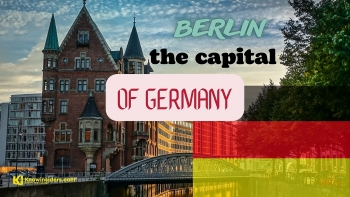 What Is the Capital of Germany: History, Facts, Best Places to See What Is the Capital of Germany: History, Facts, Best Places to See Berlin, the capital of Germany and the country's largest city, is also a major center of politics, culture, media, and science. We rounded up all ... |
 What Is the Capital of France: History, Facts, Best Places to See What Is the Capital of France: History, Facts, Best Places to See We rounded up all things you need to know about France's capital - Paris. Paris is undeniably one of the most beautiful cities in the ... |
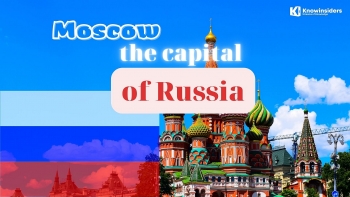 What Is The Capital of Russia: History, Facts, Best Places to See What Is The Capital of Russia: History, Facts, Best Places to See A fascinating city to wander around, stunning cathedrals, churches, and palaces lie side-by-side with bleak grey monuments and remains from the Soviet state. We rounded ... |



